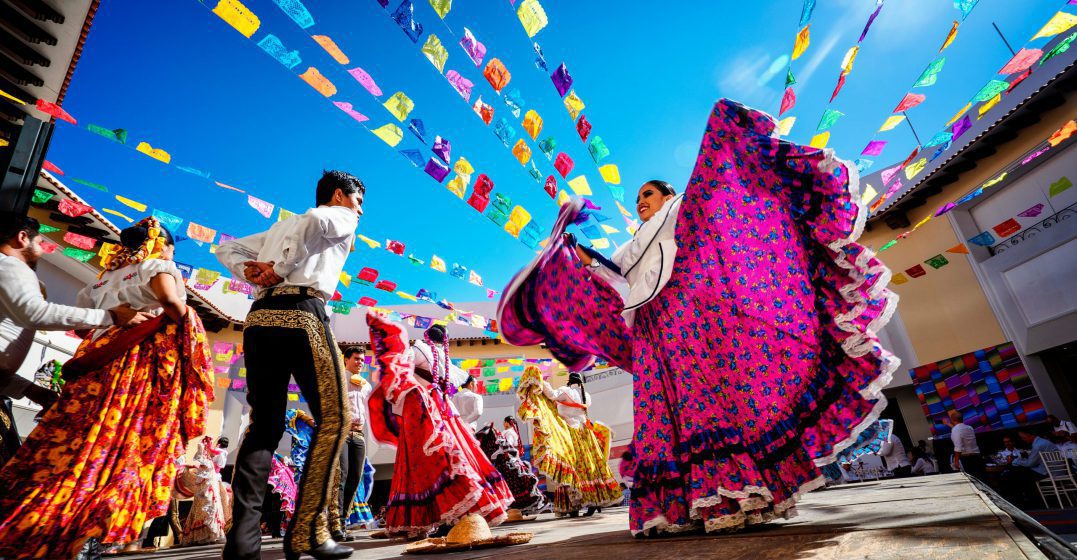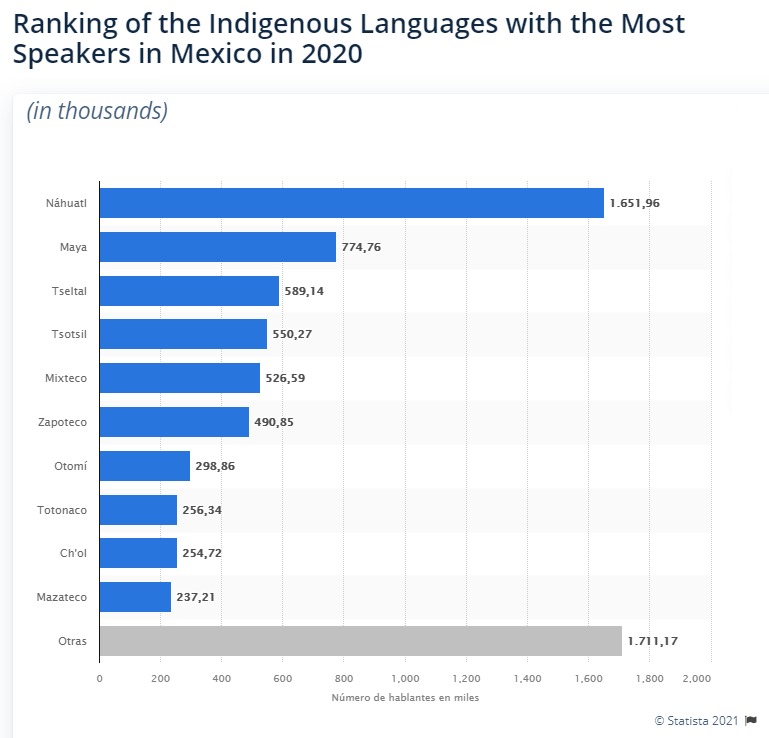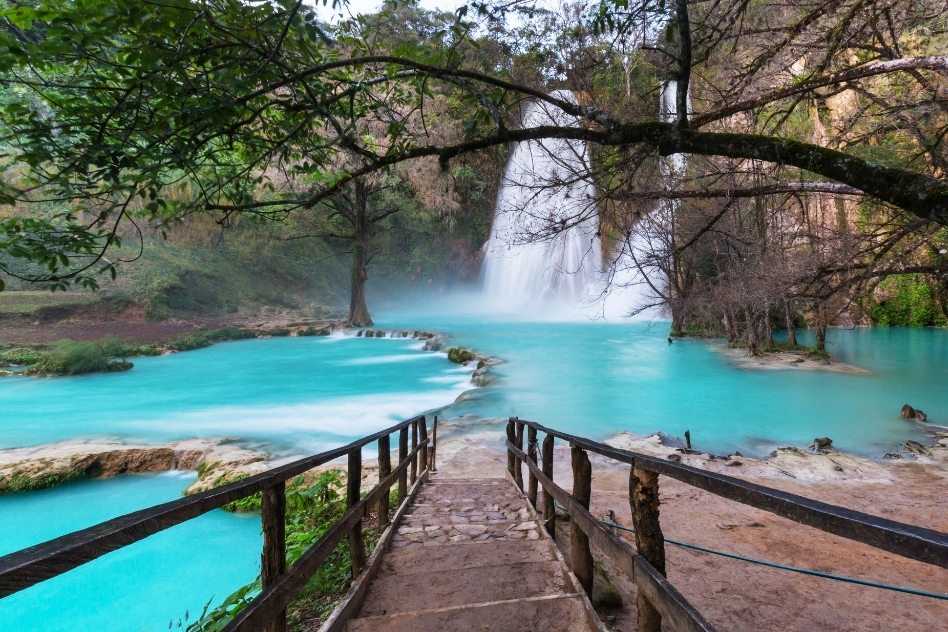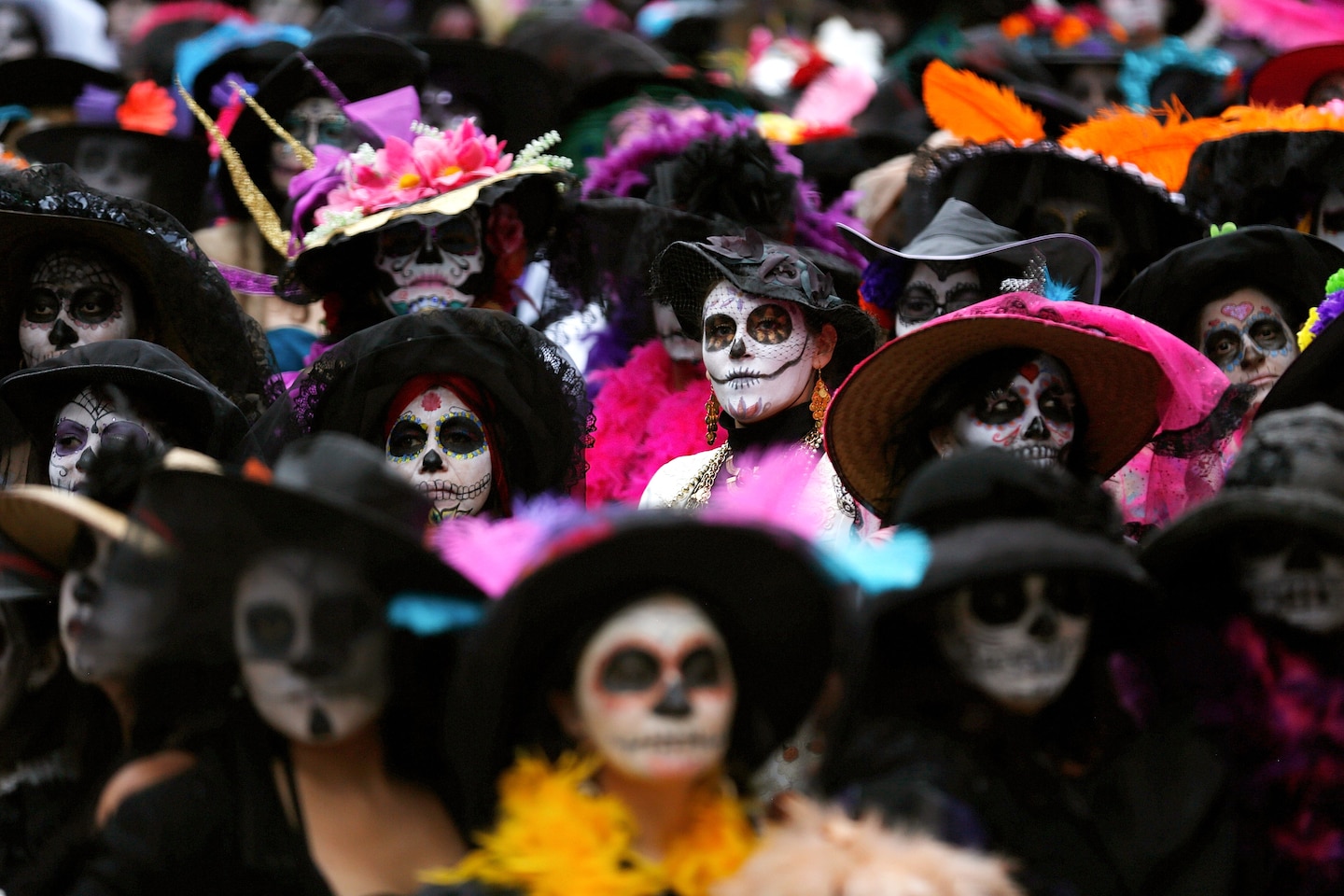What Are Some Mexican Customs And Traditions?
Ah, Mexico! A vibrant and culturally rich country known for its customs and traditions that have captivated people all around the world. From colorful celebrations to heartfelt rituals, Mexican customs and traditions offer a glimpse into the rich tapestry of this captivating nation. In this article, we’ll dive into the fascinating world of Mexican customs and traditions, exploring the vibrant fiestas, mouthwatering cuisine, and unique cultural practices that make Mexico truly special.
When it comes to Mexican customs and traditions, there’s no shortage of excitement and joy. One of the most iconic traditions is Dia de los Muertos, or Day of the Dead, a colorful celebration that honors departed loved ones. This vibrant festival is filled with marigolds, sugar skulls, and lively music, as families gather to remember and celebrate the lives of their ancestors. Another beloved tradition is the quinceañera, a grand celebration that marks a young girl’s transition into womanhood at the age of fifteen. It’s a time for extravagant dresses, joyful dances, and heartfelt speeches as families come together to honor this important milestone.
From the enchanting Mariachi music to the mouthwatering flavors of tacos and tamales, Mexican customs and traditions are deeply intertwined with their delicious cuisine. Food plays a central role in Mexican culture, with dishes like mole, pozole, and chiles en nogada showcasing the richness and diversity of Mexican gastronomy. Whether it’s the vibrant colors of a piñata at a birthday party or the

Exploring Mexican Customs and Traditions
Mexico is a country rich in culture and history, and its customs and traditions are an integral part of its identity. From vibrant celebrations to unique social norms, Mexican customs offer a fascinating glimpse into the country’s heritage. In this article, we will delve into some of the most captivating Mexican customs and traditions, shedding light on their significance and how they are celebrated.
The Importance of Family in Mexican Culture
Family is the cornerstone of Mexican society, and the importance placed on familial relationships is deeply ingrained in Mexican customs. Mexicans value close-knit family units and prioritize spending time together. Extended families often live in close proximity, fostering strong bonds and support networks.
One of the most cherished Mexican customs is the celebration of El Día de los Muertos, or the Day of the Dead. This unique holiday, which takes place on November 1st and 2nd, honors deceased loved ones and serves as a way to remember and celebrate their lives. Families gather to create elaborate altars adorned with photographs, flowers, and the favorite foods and drinks of the departed. It is believed that during these days, the spirits of the deceased return to visit their families, and the altars serve as a way to welcome them back.
The Festive Spirit of Mexican Holidays
Mexicans are known for their vibrant and colorful celebrations, which are a testament to their zest for life. One of the most iconic Mexican holidays is Cinco de Mayo, which commemorates the Mexican army’s victory over the French forces in the Battle of Puebla. Contrary to popular belief, Cinco de Mayo is not Mexico’s Independence Day, but it is still widely celebrated as a day of national pride.
Another significant Mexican holiday is Las Posadas, a nine-day celebration that reenacts Mary and Joseph’s search for a place to stay in Bethlehem. Each night, a procession led by children dressed as Mary and Joseph moves from house to house, seeking shelter. This tradition culminates on Christmas Eve with a festive gathering, complete with piñatas, traditional foods, and music.
The Rich Culinary Traditions of Mexico
Mexican cuisine is renowned worldwide for its bold flavors and diverse ingredients, and it is an integral part of Mexican customs and traditions. From street food vendors to high-end restaurants, Mexican cuisine offers a wide array of dishes that reflect the country’s cultural heritage.
One of the most iconic Mexican dishes is the taco, a versatile creation that can be filled with various meats, vegetables, and salsas. Tacos are a beloved street food and are often enjoyed with friends and family in casual settings.
Another staple of Mexican cuisine is mole, a rich and complex sauce made from a blend of chilies, spices, nuts, and chocolate. Mole is traditionally served over poultry or meats and is a popular dish during special occasions and celebrations.
The Beauty of Mexican Art and Handicrafts
Mexican customs and traditions are closely intertwined with the country’s vibrant arts and handicrafts. Mexican artisans are known for their intricate craftsmanship and use of vibrant colors, which are showcased in various forms of art, such as pottery, textiles, and folk art.
One notable Mexican art form is Talavera pottery, which originated in the city of Puebla. Talavera pottery is characterized by its detailed hand-painted designs and bright colors. It is used to create decorative objects, tiles, and tableware, adding a touch of Mexican flair to homes around the world.
Another prominent Mexican art form is papel picado, intricately cut tissue paper banners that are commonly used to decorate during festive occasions. These delicate creations feature elaborate designs and are often hung in public spaces, adding a festive atmosphere to celebrations.
The Influence of Indigenous Customs
Mexico’s customs and traditions are deeply rooted in its indigenous heritage, with many practices and beliefs originating from pre-Hispanic civilizations. From ancient rituals to traditional clothing, indigenous customs continue to be celebrated and preserved by Mexican communities.
One such tradition is the Day of the Dead, which has its roots in the Aztec civilization’s rituals honoring the dead. The Aztecs believed that death was a natural part of life and viewed it as a continuation of the journey. Today, the Day of the Dead is a fusion of indigenous and Catholic traditions, showcasing the resilience and adaptability of Mexican culture.
The influence of indigenous customs is also evident in traditional clothing. Each region in Mexico has its distinctive style of dress, with intricate embroidery and vibrant colors being common features. Garments such as the huipil and the rebozo hold deep cultural significance and are often worn during special occasions and celebrations.
Preserving Mexican Customs for Future Generations
As Mexico continues to evolve and embrace modernity, it is crucial to preserve its customs and traditions for future generations. Efforts are being made to promote cultural education and awareness, ensuring that Mexican customs remain vibrant and cherished.
Through initiatives such as cultural festivals, museums, and educational programs, Mexicans are actively engaged in preserving their rich heritage. By celebrating and sharing their customs with the world, Mexicans ensure that their cultural legacy endures, providing a source of pride and identity for generations to come.
In conclusion, Mexican customs and traditions offer a window into the country’s vibrant culture and history. From the importance placed on family to the festive spirit of Mexican holidays, these customs reflect the values and identity of the Mexican people. Through their cuisine, art, and indigenous practices, Mexicans continue to celebrate and preserve their customs, ensuring that their rich cultural heritage thrives. So, whether you’re exploring the bustling streets of Mexico City or enjoying a traditional Mexican dish, take a moment to appreciate the customs and traditions that make Mexico truly unique.
Key Takeaways: What are some Mexican customs and traditions?
- Mexico has a rich cultural heritage with various customs and traditions.
- Day of the Dead is a popular Mexican tradition where families honor and remember their deceased loved ones.
- Mariachi music is a traditional Mexican genre known for its vibrant and energetic performances.
- The Quinceañera celebration is a special event for girls turning 15, symbolizing their transition into womanhood.
- Mexican cuisine is famous for its flavorful dishes like tacos, tamales, and enchiladas.
Frequently Asked Questions
Mexico is known for its rich cultural heritage and vibrant traditions. Here are some frequently asked questions about Mexican customs and traditions:
1. What is the significance of Dia de los Muertos?
Dia de los Muertos, or Day of the Dead, is a Mexican holiday celebrated on November 1st and 2nd. It is a time to honor and remember loved ones who have passed away. Families create elaborate altars called ofrendas, adorned with photos, favorite foods, and mementos of the deceased. It is believed that during this time, the spirits of the departed return to visit their families. It is a joyful celebration filled with colorful costumes, parades, music, and traditional foods like pan de muerto (bread of the dead).
While the holiday may seem macabre to some, it is actually a celebration of life and a way to keep the memory of loved ones alive. It is a time for families to come together, share stories, and honor their ancestors. Dia de los Muertos has been recognized by UNESCO as an Intangible Cultural Heritage of Humanity.
2. What are some traditional Mexican foods?
Mexican cuisine is known for its bold flavors and diverse ingredients. Some traditional Mexican foods include tacos, tamales, enchiladas, mole, and guacamole. Tacos are a staple in Mexican cuisine and can be filled with a variety of meats, vegetables, and salsas. Tamales are made from masa (corn dough) and filled with meat, cheese, or beans, then wrapped in corn husks and steamed.
Mole is a rich sauce made from a blend of chilies, spices, and chocolate, often served over chicken or turkey. Guacamole, made from mashed avocados, lime juice, onions, and cilantro, is a popular dip or topping. Mexican cuisine also includes a variety of street foods like elote (grilled corn on the cob), sopes (thick tortillas topped with meat and salsa), and churros (fried dough pastries).
3. What are some traditional Mexican dances?
Mexico has a rich tradition of dance, with each region having its own unique styles. One popular dance is the Jarabe Tapatío, also known as the Mexican Hat Dance. It is a lively and colorful dance where couples perform intricate footwork while twirling around a sombrero. Another traditional dance is the Danza de los Viejitos, or Dance of the Old Men, which is performed by men dressed as elderly villagers.
The Danza de los Voladores, or Dance of the Flyers, is a ritualistic dance performed by indigenous communities in Mexico. It involves men climbing a tall pole, then descending while attached to ropes, spinning around in a spiral motion. This dance is believed to have originated as a way to ask the gods for rain and fertility.
4. What is the significance of the piñata in Mexican celebrations?
The piñata is a popular feature in Mexican celebrations, particularly at birthday parties and Christmas posadas. It is a decorated container filled with candies, fruits, and small toys. The piñata is suspended from above, and blindfolded participants take turns trying to break it with a stick, while others sing and cheer them on.
The tradition of the piñata dates back to the 16th century when it was introduced by Spanish missionaries. The original piñatas were shaped like stars with seven points, representing the seven deadly sins. Breaking the piñata symbolizes the triumph over evil, and the treats inside represent the rewards of overcoming temptation.
5. What are some traditional Mexican festivals?
Mexico is known for its vibrant festivals throughout the year. One of the most famous is the Carnival of Veracruz, held in the coastal city of Veracruz. It is a week-long celebration filled with parades, music, dancing, and colorful costumes. Another popular festival is Guelaguetza, which takes place in Oaxaca and showcases the diverse indigenous cultures of the region through dance, music, and traditional clothing.
The Day of the Virgin of Guadalupe, celebrated on December 12th, is a major religious festival in Mexico. It honors the appearance of the Virgin Mary to Juan Diego, an indigenous man, and includes processions, pilgrimages, and Masses. Other notable festivals include the Independence Day celebrations on September 16th, the Day of the Mariachi in Guadalajara, and the Feast of the Virgin of Zapopan in Jalisco.
Mexican Culture: Customs & Traditions
Final Thoughts
So, there you have it! A glimpse into the vibrant and fascinating world of Mexican customs and traditions. From colorful festivals to delicious cuisine, Mexico has a rich cultural heritage that is truly awe-inspiring. Through this article, we’ve explored some of the most prominent customs and traditions that make Mexico unique.
Whether it’s the lively celebrations of Dia de los Muertos, the traditional dances of Ballet Folklorico, or the mouthwatering flavors of authentic Mexican cuisine, these customs and traditions showcase the warmth, passion, and zest for life that embody the Mexican spirit. They are a testament to the country’s deep-rooted history and the diverse influences that have shaped it over the centuries.
By understanding and appreciating these customs and traditions, we can gain a deeper insight into the Mexican culture and foster a sense of connection and appreciation. So, the next time you find yourself craving some delicious tacos or planning a vacation, remember to immerse yourself in the vibrant world of Mexican customs and traditions. It will undoubtedly be an experience that will leave you with lasting memories and a newfound appreciation for this remarkable country.
Keep exploring, keep embracing diversity, and keep celebrating the beautiful tapestry of cultures that make our world so extraordinary. Viva Mexico!






